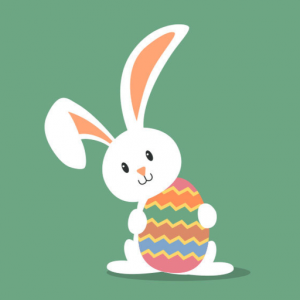The Icons of Easter
The fascinating facts of how the Easter bunny and eggs fit into the holiday of Jesus’s resurrection.
Think of Easter, and the things that are associated with it. For Kiefer Callewaert it was,
“The Easter Bunny and colorful eggs.”
But where is the tradition of bunnies and painted eggs from and what do they have to do with Jesus’s resurrection and Easter? For starters, the Bible doesn’t mention any bunnies hiding colorful eggs for children to find. But many of these Easter traditions many know today in America come from Germany and from German immigrants like the bunnies associated with Easter. With Germans arriving to America in the 1700s they brought their own tradition according to History.com,
“German immigrants who settled in Pennsylvania and transported their tradition of an egg-laying hare called “Osterhase” or “Oschter Haws.” Their children made nests in which this creature could lay its colored eggs. Eventually, the custom spread across the U.S. and the fabled rabbit’s Easter morning deliveries expanded to include chocolate and other types of candy and gifts, while decorated baskets replaced nests.”
The egg part of Easter can be traced back to pagan traditions. The egg was seen as an ancient symbol of life and was seen in pagan festivals, celebrating spring. So with the celebration of Easter taking the place of those spring pagan festivals the eggs were able to fit the Christian narrative as well. For Christians, Easter eggs are said to represent Jesus and his resurrection from the tomb. As for the decorating of eggs, eggs were formerly a forbidden food during the Lenten season, so people would paint and decorate them to mark the end of the period of fasting, then eat them on Easter as a celebration.
And since then, all of these traditions have become extremely commercialized to this day in America, to the point where many associate a bunny and colorful eggs more with Easter than Jesus and his resurrection, which is the basis for which Easter has been celebrated.

My name is Robert Maggiacomo. I am a 16-year old junior at Triton High School. I'm from Byfield, Massachusetts. When I'm in journalism I enjoy covering...



Rob • Apr 9, 2020 at 3:54 pm
bunny